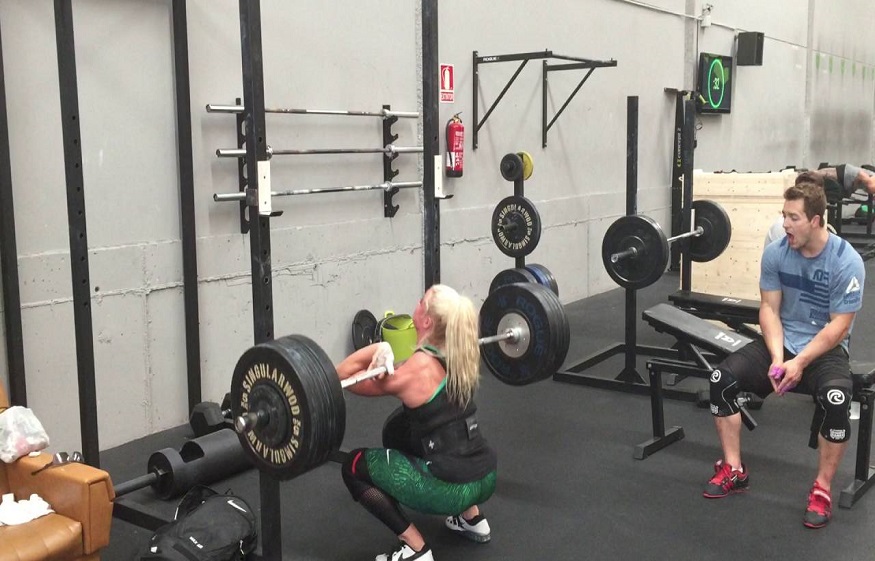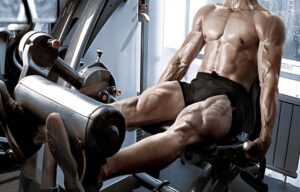I was looking for a program that would challenge me while targeting the weakness in my quads. I’m not considered an “elite” weightlifter on the world stage, but I know my level is way above some other athletes, especially when it comes to squatting.
Read also: The best exercises to strengthen the lower body and be stronger
Like anyone who spends their time engrossed in CrossFit ®*, weightlifting and powerlifting, I took the time to read “Super Squats” by Randall J. Strossen (1989). The concept was based on an old school routine that promised up to 30 pounds of muscle gain, which could only boost physical and mental strength. A perfect program for CrossFitters!
The program
The program is spread over 6 weeks and is structured around a day of work / day of rest protocol. You can change the days of training, but you must be careful to respect the alternation in order to give your body the maximum time to recover and develop. The original program recommends starting with military presses as a warm-up, but you can also do your usual warm-up and start each session with 1 set of 20 light squats, followed by the following additional exercises:
The main objective of the 20 squats program is to gain volume and strength throughout the body, triggering hypertrophy (muscle growth) through progressive overload.
With each session of squats you do, you will need to add 2.5 kg to your bar, which equates to an increase of 7.5 kg per week. More weight means more stimulus, forcing your body to adapt and grow. Try to avoid failure. If you fail, start your next session with the same weight and resume the program from there. If you fail regularly, you can reduce the number of sessions to twice a week.
Difficulty
The first few weeks of the program can be relatively easy, but they are necessary for the rest. Take the time to practice your movement to master the position, the descent and the ascent. This can include practicing the grip, foot position, posture, and lateral activation. You’ll also need to make sure you’re doing the right warm-up, a squat-specific warm-up, like Bryce Lewis’ Big Skwaat and Deadlift warm-up:
Over time, the program will deliver on its promise to be as challenging as possible. You will need to pause between repetitions to take three to five deep breaths at a minimum. This is why they are often known as “squat breaths” and a single set of squats can last up to 3 minutes. You will tend to want to put the bar on the floor, sometimes even after only 5 repetitions, but you should never DROP THE BAR! Stay tense when you catch your breath. Do not be mistaken. Do not use belts or straps. Squat deep and focus on form.
Diet
You will need to eat a lot! The program is also known as the “20 Squats Program” or the “Squats and Milk Program” because it recommends GOMAD (one gallon, about 4 liters, of milk per day) to accompany squats. I didn’t drink the gallon of milk a day, but I consumed a lot of calories and protein to make up for it. Be prepared to eat enough healthy foods to support your muscles, to generate growth, and to replace protein and glycogen used in training. It is recommended to consume 0.8-1g of protein per kg of body weight each day.
Benefits
The 20 rep squat program does a great job of forcing the lifter to maintain form and breathe tension. Since the series are quite long, it is essential to maintain a good posture, an adequate position and sufficient muscle tension, while breathing deeply with the belly. As the focus is on stances and mechanics, this should positively reinforce the correctness of the movements.
The 20 Rep Squat routine will help you gain weight and build muscle. The combination of metabolic stress, muscle microdamage and mechanical strain caused by progressive overload (adding weight to each session) will trigger a muscle growth reaction, hypertrophy. It will also increase your work capacity while teaching you endurance, hard work, and steady progress. This can be extremely beneficial, as the added psychological stress and complex movements required to complete each workout can have significant positive impacts on your career.
Other things to consider
I recommend doing high back squats with a barbell, as opposed to a low squat or a front squat. It will depend on your goals, but the high bar increases quadriceps, back and arm strength and size and allows for greater training frequency and volume. Gains made with these types of exercises will also carry over to low bar squats and Olympic lifts, which is why they are often included in the hypertrophy phase of powerlifting or weightlifting programs.
You can change the accessory exercises to meet your goals and match your own abilities. This can include combinations, WODs, calisthenics, weightlifting, strongman, etc. Whichever program you choose, keep in mind that the 20-rep squat program targets hypertrophy. Whatever accessory exercises you choose, you will constantly need to add more volume. This means more weight, reps, or time each session to force the body to respond to training by building muscle. Exercise variance and intervals with more reps are important at this stage of training to increase work capacity, trigger muscle growth, gain strength, and work imbalance.
Who is the 20 Rep Squat program for?
The 20 Rep Squat program is best suited for those who have some knowledge of weightlifting or have reached a certain threshold. It can also be useful for beginners (in the early years of CrossFit) because it teaches lifters how to handle heavy weights and allows them to gain a lot of muscle. For absolute beginners, without the proper guidance, monotony and pressure can lead to injury, discouragement or very bad habits.
Recovery
This program may not be best suited for certain goals or other body parts. The legs respond particularly well to 20 Rep training, but different muscles respond to different stimuli. This means different streak lengths, different frequencies and diversification. While 20 Reps training is optimal for certain parts of the body, such as the torso (which responds better to lower rep ranges), or for certain strength goals, its effectiveness will depend on the athlete’s ambitions, needs, and His experience. Moreover, George Leeman often integrates a 20 Reps program in his quest for an ever more monstrous deadlift (over 400 kg), just like Stan Efferding who has an equally impressive squat (over 400 kg),



